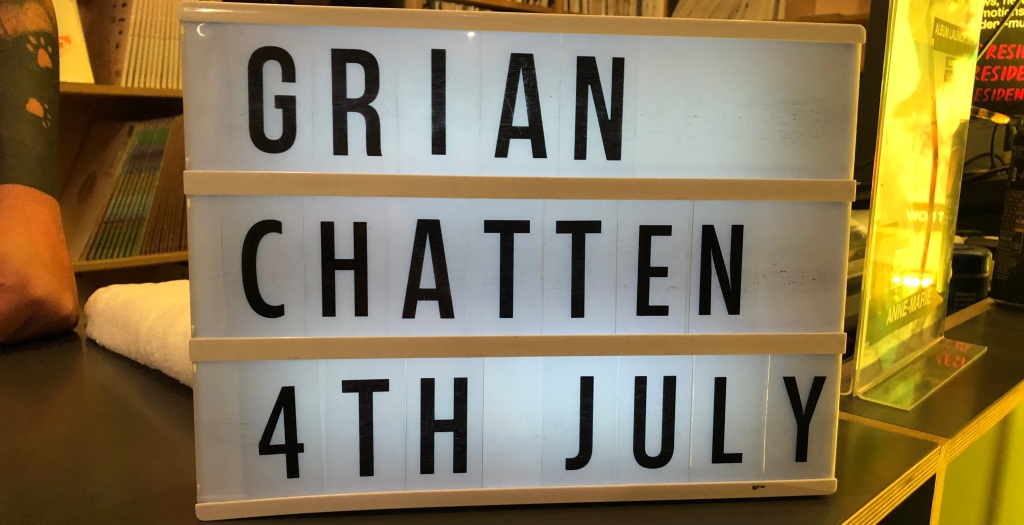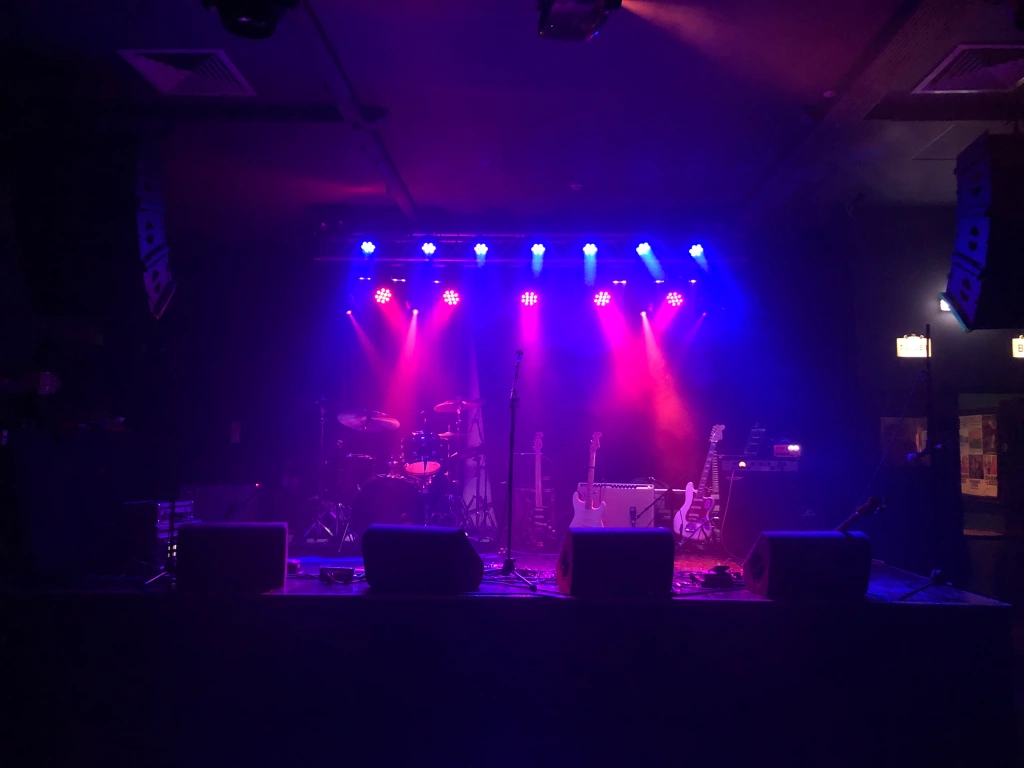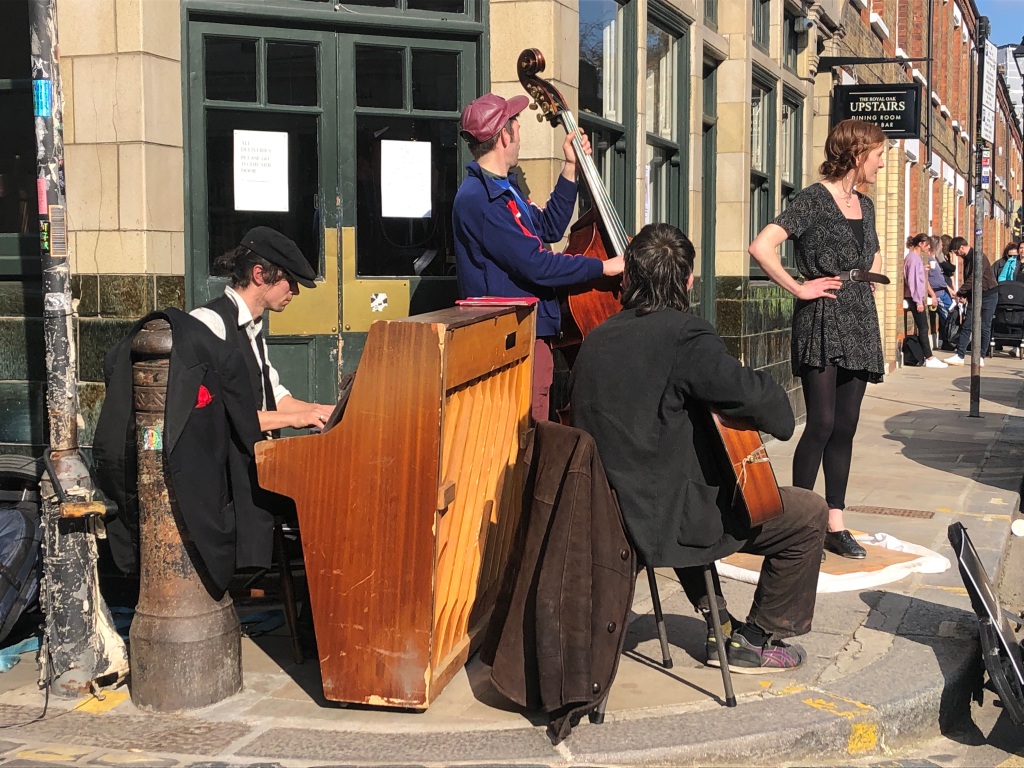It’s a few days after Christmas, and most of Oslo town is closed. Since I’ve mainly been here before in the light, bright warmer months of the year, being here on the flip side of summer is a cold and dark experience. Arriving in the evening on December 26, my three travelling companions and I walk from the train station and through the city’s Main Street, Karl Johans gate, which leads upwards and towards The Royal Palace (‘Slottet’), the official residence of the King and Queen of Norway.


We walk past the palace where people have laid flowers and lit dozens of candles in memory of Crown Princess Martha’s former husband, Ari Behn. He sadly killed himself over Christmas – a story that’s taking up all the front pages in Norway right now.
We continue into the darkness of Slottsparken, a public park surrounding the palace and walk through the park to the other side before reaching our destination, our guest house (‘pensionat’) for the next two days, Cochs Pension. We chose to stay there because it’s featured in the book, Halvbroren by one of Norway’s most famous novelists, Lars Saabye Christensen. The hotel is also across the road from The House of Literature which isn’t open while we’re here but sounds like a great place for literary events.


According to Google, Cochs Pension is a 2-Star hotel; nothing fancy but safe, clean and warm – and our room has a lovely view over the northwest side of Oslo. We can also look down on the restaurant on the corner, Lorry, which, as it says on its website, is ‘one of Oslo’s oldest restaurants,’ with a history dating back to the 1870s. One of the dishes on their menu is a traditional Norwegian fish soup and lots of other classic options of Norwegian cuisine.
After dropping off our bags, we go back into town and arrive at the Christmas Market just as they’re closing down for the evening. We go in search of something to eat.


With most restaurants closed until the next day, we have limited choice; we consider the junk food option, the Nordic burger chain, Max, but end up in a tiny hole-in-the-wall Vietnamese restaurant called Dalat Cafe, which turns out to be an excellent choice. After dinner, we search for an open bar, but that’s hard to find on a Christmas holiday, so we call it a night and walk back to the hotel for a good, early night’s sleep.

The next day, over breakfast in a small cafe, ten minutes walk south of our hotel, we decide to get out of town for the day. More precisely, we want to go to the north of the city centre, since we know that there are snowy conditions outside of town. After breakfast in a bakery/cafe, we take the T-bane Metro line Number 1 the thirty minutes or so to the outskirts of northern Oslo and get off the train two stations past the famous ski jump ramp, Holmenkollen, at Skogen station. We step out into a winter wonderland. People are skiing and sleighing and having the kind of childish fun that snow inspires even among adults. We haven’t brought any skis or sleighs, so we’ll have to make do with strolling, though I get enthusiastic enough to sit down on the top of a small hill and let my thick winter coat be a sleigh for a short moment. Wheeee! To be a child again, if only for ten seconds.


After a long walk in the snow, we return to the city centre where it’s been snowing a bit for the few hours we were out of town, leaving a thin layer of snow on the ground. We take a tram to Frognerparken, also known as Vigeland Sculpture Park, which is a nice park for strolling and serves as an outdoor museum with over 200 sculptures in bronze granite cast iron, all done by the same artist, Gustav Vigeland. Some are dramatic, some are cruel and violent, while others are erotic or funny. It’s a brilliant collection of sculptures, including an angry boy, a naked man balancing four babies in his hand and on his foot, and lots more.



Though we’re tired and cold, we want a drink before going back to the hotel. We walk past the bar, Angst, but an empty cafe signalling ‘anxiety’ doesn’t feel so inviting right now. Instead, we end up at the bar at Hotel Bristol.

At least there are about a handful of other patrons there, though there are more staff at work than customers. Afterwards, my companions go to another bar. I’m too tired and cold, and I also have fish soup on my mind, so I have dinner at Lorry. I relish the hot soup, and equally, I take delight in the fact that I only have thirty seconds to walk back to the hotel after dinner.


The following day we wake to white city streets. The snow has grabbed hold of the city streets and the thin, white layer has grown thicker overnight. I have a plane to catch in the afternoon, but we have time for a walk through the snowy Oslo streets in the embassy district, where all the big houses look extra fancy in the snow.




Later, we do one final walk down Karl Johans gate past the Christmas Market on our left and the nearby Nobel Peace Center – which I visited years ago – on our right. I say goodbye to my companions (who will stay a day longer) and continue towards the train station from where I’ll get a train to Oslo Airport, Gardermoen, about half an hour from central Oslo. As I reach the harbour, I walk past Oslo Opera House with its remarkable structure that resembles an iceberg and is built for people to walk upon the roof. But I don’t have the time for roof walking on this occasion – I’ve got a train and a plane to catch.


Oslo can be lovely to experience in winter, but I confess I prefer warmer days, so I think the next time I return will be in the summer.

Stats
Population, Norway: 5,300,000
Population, Oslo: 697,000
Currency: Norwegian krone (NOK)
Warmest month: July (average 17.7C)
Coldest month: January (average 2.9C)





Leave a comment